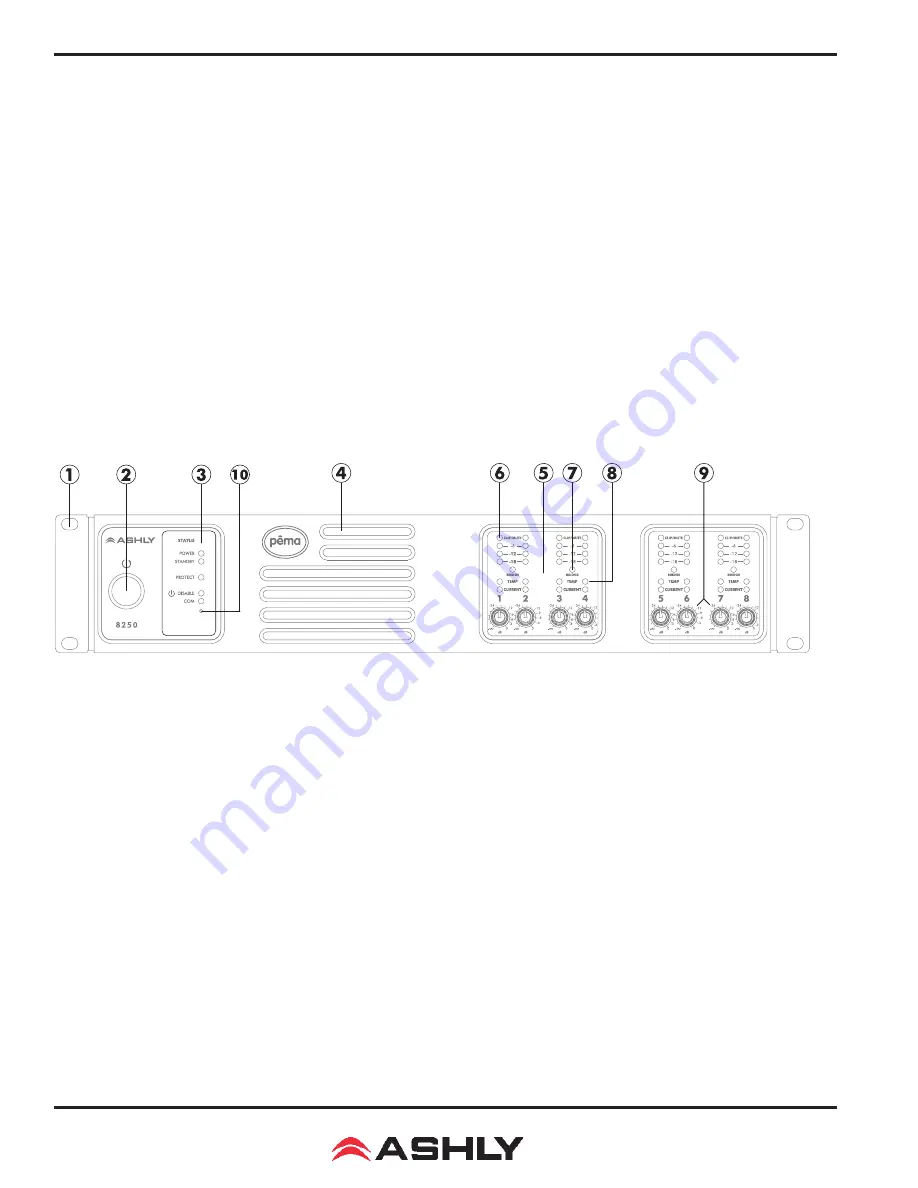
Operating Manual - Pema Protea Equipped Media Amplifier
6
2.3b Firewalls
- If Protea
ne
software does not detect the Pema amplifier, the firewall in the host PC should be turned off,
as firewalls may block the Pema
or NE device response to the controlling PC when network communication is attempted. The
current PC firewall status is found by clicking on the Windows Start button, then Control Panel, then double clicking on the
security shield where the firewall can then be disabled. Once communications with the device is established, the firewall can
be enabled again, but if there continues to be communications problems then disable the firewall.
2.3c Wi-Fi and LAN
– For the initial device auto-configuration process, any secondary Wi-Fi connection should also
be disabled, and the LAN (Local Area Network) connection must be enabled on the PC. Secondary network connections may
confuse the auto device discovery process. Go to the Windows Control Panel, then Network Connections, to disable any second-
ary network connections. Once communications with the device is established, secondary network connections can be enabled
again, unless a communications problem remains with Pema
or NE devices, in which case the secondary network connections
should remain disabled.
2.3d Connecting Device(s)
- Connect the Ethernet cable from the PC or network router to the Ashly Pema
or NE remote
control device. If a successful Ethernet connection has been made, a solid green LED (Link) lights up on the device Ethernet
port. If there is no green LED showing, there is either a problem with the cable or the network source, which must be addressed
before proceeding further. All RJ-45 Ethernet ports flash green when active, so backtrack through any other cables, routers, or
switches to find the problem. The flashing yellow LED (Data) indicates that data is flowing to or from the device.
2.4 Front Panel Features
1. Mounting Holes
– For rack mounting.
2. Power Switch
– Switches the unit on or off. Note: The power switch can be disabled from Protea
ne
Software.
3. Status LEDs
– Indicate status of: Power, Standby, Protect, Power Switch Disable, and Com activity.
4. Air Inflow Vents
– Cool air enters here and is vented out through the sides.
5. Channel Controls
– Channel control area.
6. Signal LEDs
– The lowest LED will begin to light when the output voltage reaches -18dBu below rated output. The
Clip LEDs will begin to flash when output voltage is 1/2 volt below the output power supply voltage, or the front end is clipped.
7. Bridge
– This LED indicates that the channel pair is selected to BRIDGE mode from within Protea
ne
software, and that
only the odd input channel level control is active.
8. Temp and Current LEDs
– The Temp LED indicates that the amplifier channel has reached an excessively high operat-
ing temperature and will gradually attenuate the signal to compensate. If unable to sufficiently cool the channel, the amplifier
will eventually go into protect mode. The Current LED confirms that the amplifier output is delivered to a speaker load.
9. Channel Attenuators
– These control the input signal level to the amp, and can be disabled from software.
10. Factory Reset
– To reset all internal configurations (including presets and passwords) back to the original factory set-
tings, press and hold this recessed front panel momentary switch during power up until all channel LEDs sequence from bottom
to top. Upon reset completion, the LEDs will turn off and the amp will be in normal operating mode.





















